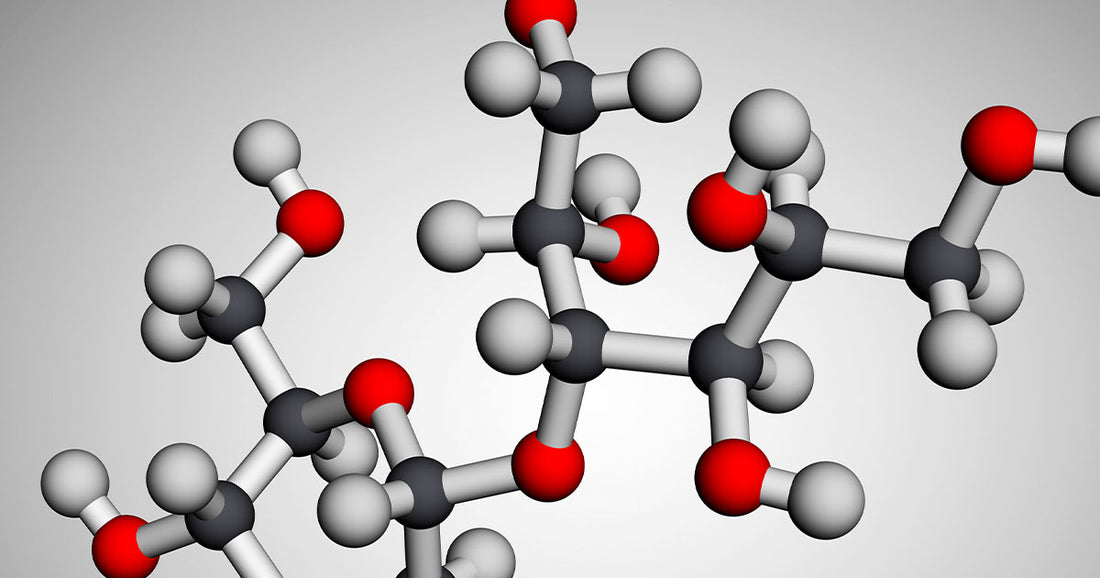
What is Maltitol?
Share

What is Maltitol? Is it Safe?
Maltitol is a sugar alcohol that contains half the calories of sugar along with a lower glycemic index. It is commonly used in many sugar-free foods and sweets, but is it safe? This article will go over what maltitol is and why it may not be the safest sugar alternative out there.
![]()
This article has been medically reviewed by Dr. Charles Penick, MD 
Healthier Maltitol Alternatives
What is Maltitol?
Maltitol is a naturally-forming sugar alcohol found in some fruits and vegetables. It is almost as sweet but has a lower glycemic index and contains fewer calories than sugar. Maltitol is a disaccharide, which is a simple sugar like sucrose, lactose, and maltose.
Maltitol vs. Sugar
Here is a side-by-side comparison of Maltitol and Sugar:
|
Nutrient Specifics |
Maltitol |
Sugar |
|
Calories per gram |
2-3 |
4 |
|
Sweetness (percentage) |
75% -90% |
100% |
|
Glycemic index |
52 |
60 |
|
Oral health |
May help prevent cavities |
Might cause cavities |
Foods with Maltitol
Maltitol is typically added to foods as a sugar substitute and to decrease calories. The most common foods containing maltitol include the following:
- Sugar-free gum
- Baked goods
- Chocolate
- Ice cream
- Hard candies
- Energy bars
- Keto snacks
Benefits of Maltitol
Many people favor maltitol over sugar. Here are some of the top reasons choose maltitol over sugar:
Lower Calories
Maltitol has fewer calories than sugar and you can find it in products labeled “sugar-free” or “low calorie.” Studies indicate added sugars supply (empty) calories and increase the risk of developing obesity, cardiovascular disease, hypertension, obesity-related cancers, and dental caries. [1]
Lower Glycemic Index
The glycemic index is a number that represents how quickly the body digests food and converts it into glucose (blood sugar). Maltitol has a glycemic index of 52, while sugar’s glycemic index is 60. (please note: other low-carb sweeteners have a lower glycemic index than maltitol). Studies indicate low-GI diets may be helpful in glycemic control and may reduce body weight in people with diabetes or prediabetes. [2]
Dental Health
According to theCDC, about 1 of 5 (20%) children aged 5 to 11 years have at least one untreated decayed tooth. In addition, children aged 5 to 19 years from low-income families are twice as likely (25%) to have cavities, compared with children from higher-income households (11%).
Chewing gum with maltitol may help support dental health by reducing bacterial growth and gingivitis. A study on schoolchildren ages 6 to 9 found the short-term administration of Stevia or maltitol snacks improves some important factors related to caries. [3]
Maltitol Risks & Side Effects
- Gas
- Bloating
- Abdominal discomfort
- Diarrhea
- Cramping
If you’re using maltitol as a sugar substitute for the first time, start with low amounts to test for potential allergic reactions.
Healthier Maltitol Alternatives
There are several sugar substitutes available that may be healthier than maltitol. here the three most popular:
- Erythritol. Erythritol is a naturally occurring artificial sweetener found in a variety of low-sugar or sugar-free foods. Erythritol does not contain any calories or carbohydrates and has no impact on the metabolism or bodily functions. The sweetener is rapidly absorbed into the small intestine when consumed, with 90% of it leaving the body via urine. Read more about erythritol HERE. To order products containing erythritol, CLICK HERE.
- Stevia. Stevia has zero calories and a glycemic index rate of zero. this natural sweetener is popular among people with diabetes those who must regulate their blood sugar levels. to order stevia products CLICK HERE.
- Agave. Agave nectar is another popular alternative to sugar. The natural sweetener has a glycemic index of 30 and is popular among vegans.
Final Thoughts
While maltitol has some potential benefits such as decreasing tooth decay low caloric content and lower glycemic index the lack of supportive research makes other alternatives more appealing. we discussed there are several natural to sugar available. check labels on your favorite sugar-free foods give these sweeteners a try.
Medical Disclaimer: This article is based upon the opinions of Revelation Health. The information on this website is not intended to replace a one-on-one relationship with a qualified health care professional and is not intended as medical advice. It is intended as a sharing of knowledge and information from the research and experience of Revelation Health and associates. This article has been medically reviewed by Dr. Charles Penick, MD for accuracy of the information provided, but Revelation Health encourages you to make your own health care decisions based upon your research and in partnership with a qualified health care professional.
References:
[1] Anna Pia Delli Bovi, Laura Di Michele, Giuliana Laino (et al). Obesity and Obesity Related Diseases, Sugar Consumption and Bad Oral Health: A Fatal Epidemic Mixtures. Transl Med UniSa. 2017 Jan; 16: 11–16. Published online 2017 Jul 1. PMCID: PMC5536157. [PMID: 28775964]. https://www.ncbi.nlm.nih.gov/pmc/articles/PMC5536157/
[2] Mohammad Ishraq Zafar 1, Kerry E Mills 2, Juan Zheng (et al). Low-Glycemic Index Diets As An Intervention For Diabetes: A Systematic Review And Meta-Analysis. 2019 Oct 1;110(4):891-902. doi: 10.1093/ajcn/nqz149. [ PMID: 31374573]. https://pubmed.ncbi.nlm.nih.gov/31374573/
[3] Fabio Cocco, Maria Grazia Cagetti, Roberta Livesu, (et al). Effect Of A Daily Dose Of Snacks Containing Maltitol Or Stevia Rebaudiana As Sweeteners In High Caries Risk Schoolchildren. A Double-Blind RCT Study. 2019;17(6):515-522. doi: 10.3290/j.ohpd.a43329. [PMID: 31641701]. https://pubmed.ncbi.nlm.nih.gov/31641701/
